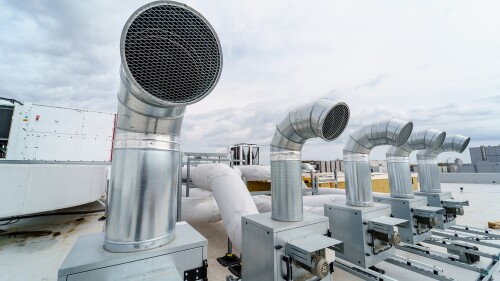| Arizona Biltmore Hotel, Phoenix. |
The Arizona Biltmore, often called the “Jewel of the Desert,” was awarded the ULI Heritage Award for architectural integrity, landscaping, and high quality of service in 1997. The award was given not just because the hotel’s personnel have closely maintained records of all the well-known people who visited the hotel over its 83-year history, but because as the property has expanded over the decades, its owners have been able to maintain the Frank Lloyd Wright–influenced vision that made the resort famous.
Today, the Arizona Biltmore is part of Hilton’s Waldorf Astoria Resorts group, but when it was constructed, the original owner and investor was chewing gum magnate William Wrigley, Jr. To develop the resort, Wrigley turned to Phoenix brothers Charles and Warren McArthur, who then commissioned their brother, Albert, a Wright protégé, to design it.
Heavily influenced by Wright’s textile blocks, the resort’s skin to this day is made up of the famed Biltmore blocks that were molded from sand and water and sculpted by Southwest artist Emry Kopta. Through the years, owners have attempted to maintain the integrity of the 1929 design. The original molds for the Biltmore block still belong to the hotel, and all the expansions and renovations have used blocks made from the original molds.
Designers, planners, and renovators of the Arizona Biltmore routinely consult with architects from the Frank Lloyd Wright Foundation and School of Architecture at Taliesin West in nearby Scottsdale, Arizona. Plenty of Biltmore originals remain in the hotel core, including the lobby elevator, wrought-iron work, and some furniture.
The Biltmore, resting on 39 desert acres (16 ha) in the heart of Phoenix, today boasts 740 guest accommodations, a full-service spa/salon/fitness center, two 18-hole golf courses, six restaurants, and eight swimming pools.
The last major changes were made in 2009: Wright’s at the Biltmore, the hotel’s fine-dining restaurant, was renovated at a cost of $800,000, and the Ocatilla boutique area was rebuilt in a $9 million project. Current work involves renovation of the rooms in the historic main building and at ownership villas.
The Biltmore bar has appeared in so many movies that it is hard to remember that the hotel opened during Prohibition. The original hotel included a speakeasy complete with a double-sided bookcase, secret stairs, and a gorgeous Biltmore-block fireplace.






